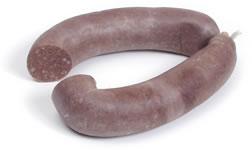Spain, Poland, Russia, EUROPE
 What about lotus in a standing pool? No, I am talking not going to explain this to you, but I would really elaborate on why I got amazed at the very fact that in Eastern Europe, cow’s intestines are filled with good stuff, I mean edible stuff. The words “kishka” or “kishke” are of Slavic origin closer to the Polish word “kiszka”, meaning “gut”, “intestine”, and in culinary terms, “sausage”.
What about lotus in a standing pool? No, I am talking not going to explain this to you, but I would really elaborate on why I got amazed at the very fact that in Eastern Europe, cow’s intestines are filled with good stuff, I mean edible stuff. The words “kishka” or “kishke” are of Slavic origin closer to the Polish word “kiszka”, meaning “gut”, “intestine”, and in culinary terms, “sausage”.
Kishke is filled with pig’s blood and barley and is served as a traditional breakfast in Eastern Europe. Jewish kishke is usually filled with the Passover meal, containing barley, rye, spelt, and wheat, spices and schmaltz. The color of kishka can vary from grey-white to brownish orange, depending upon the use of paprika.
The vegetarian Kishka is very sensible where celery, carrots, onions, seasonings, and matzo meal are processed together and rolled into an aluminum casing or foils, which are edible. The non-vegetarian kishke gives the real flavor, with the beef or cow intestines. In Spain it is blood stuffing and in Poland and Russia it is made with the matzo meal. I must say that this is weird as no such food was prepared even for the Passover meal.
Thank heavens they did not stuff the eyeballs, lungs, cow skull with the matzo meal. However, it is better than Japanese stuffed squid intestines.
Kishke-Recipes: Jewish Mag




